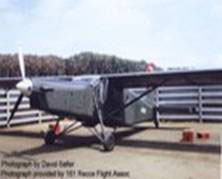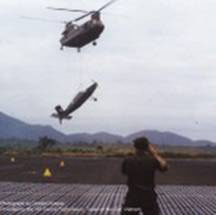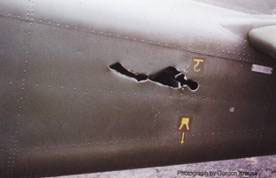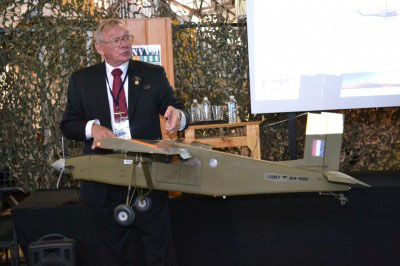Commencing as the Australian Flying Corps in 1913, Australian Army Aviation re-emerged during the Korean war of 1950-53. The Australian Flying Corps became the Royal Australian Air Force (RAAF) in 1921. During the Korean War several Army officers trained as pilots and flew Auster mk 3 aircraft. Captain Paul Luscombe became the first army pilot killed in action since 1918. As the years progressed the Army formed a small flying unit with army pilots and RAAF support personnel. This unit became 16 Army Light Aircraft Squadron (16 ALA). Aircraft numbers and types increased throughout the 1960’s to include the Cessna 180 fixed wing aircraft and the Bell 47G3B1 helicopter.

During the early 1960’s the RAAF experienced difficulty supporting the unit and Army recruited personnel from all electrical, mechanical, instrument and radio trades. These recruits received further training at RAAF Base Amberley and induction into the fledgling Army Aviation system. The RAAF maintained overall control of army aircraft while Royal Australian Electrical and Mechanical Engineers (RAEME) personnel took over the active maintenance role.
Enter ‘The Porter’:
About 1966 the Army declared the Cessna 180 obsolescent and sought a replacement aircraft. The Pilatus Turbo-Porter (PC-6/B2-H2 Australian Military Specification) became the preferred replacement for the Cessna 180. Introduced into service from 1968 until the early 1970’s, Army procured 19 ‘Porters’. Pilots and ground crews ‘loved’ this aircraft; as can be attested by the reverence with which those of us who maintained or flew them speak.
Following is an abbreviated history of A14-680: An extract from Army Aviation web page (With a couple of text corrections).
A14-680 680 HB-FDV
Delivered to the 1st Aviation Regiment at RAAF Base Amberley Qld on 25/10/68 after being flown to Australia from Stans in Switzerland. A14-680 along with 681 and 686 were the first three Pilatus Porters to be sent to Vietnam for operational service with 161 (Indep) Recce Flt. They travelled to Vietnam aboard HMAS Sydney accompanied by Lt Damien Aird (Fixed Wing Pilot) and Cpl John Crawford (Engine Fitter). The plan on arrival off the coast of Vung Tau was to airlift the aircraft off HMAS Sydney as a slung load under a US Army CH-47 Chinook helicopter. A14-680 was the first aircraft to be unloaded. A special sling system had been designed to lift the Porter aircraft and timber beams had been strapped to the horizontal stabilizer for rigidity. During the initial lifting process the excessive down wash from the rotor blades of the Chinook was so great that the lifting bar/jig that went through the rear ‘lift/tie down’ point on the tail plane tore through the aircraft skin and bulk head. The result being that the nose of the Porter began to tilt upwards, towards the belly of the Chinook, as the bar continued to tear through the skin of the aircraft. How far the rear lift/tie down bar would continue to tear through the tail section of the aircraft was an unknown factor. Chinook pilots’ options were, ‘drop the Porter into the South China Sea, or try to make Vung Tau Airfield or Nui Dat before something catastrophic occurred’. The decision was made to try for Nui Dat and thankfully that occurred without the loss of the aircraft. Served with 161 (Indep) Recce Flight in Vietnam. Aircraft repaired by members of 161 (Indep) Recce Flight Workshop (supervised by Sgt. Bob Ovens). This aircraft was sent home to Australia and replaced by A14-701 in May 1970. Served with 173 Gen Spt Sqn at Oakey post January 1974. On 21/09/81 aircraft crashed at Weipa Qld. when it veered off the runway during an attempted night take-off. Aircraft was damaged beyond repair.


(Photos from 161 Recce Flt Collection)
Some of A14-680’s Firsts:
A14-680 was the first Porter delivered to Army Specification. Four aircraft arrived earlier but these were civilian models delivered to fulfil the Pilatus contractual agreement. They underwent refurbishment later to meet Army specification.
During the acceptance inspection test flight (Capt. Graeme Hill-Smith as pilot and Corporal Tom Jobling as recorder) the engine commenced to ‘fluctuate. An immediate return to base resulted. Inspection revealed damage to the compressor blades. An engine change became necessary. This became the first Porter engine change conducted by Australian Army personnel. The drama in procuring the engine from No.7 Stores depot (Toowoomba, Darling Downs) is a story in itself. An engine finally arrived at Amberley and work progressed.
At this stage the only manuals available for the engine were in Swiss German! Luckily one engine fitter was of German origin and could both speak and read the language.
Porter 680 became the first to be delivered to Nui Dat (Luscombe Airfield) in 1969. As can be seen from the photos above it was not the first to fly. This became the privilege of A14-686 (shot down with the loss of all aboard, 3rd December 1969).
A14-680 finally took to the air at Nui Dat on 22 December 1969 following repairs. The test pilot was Major Graeme Hill-Smith and the recorder Sergeant Tom Jobling (NCO in command, engine section, 161 Independent Recce Flt).
Returning to Australia in 1970 the aircraft underwent major maintenance and allotment to 173 General Support Squadron. Unfortunately A14-680 suffered damage at Weipa (North Queensland) and was written off.
The model below is a 1/7th scale of A14-680 and faithfully records the aircraft as it served in South Vietnam. It is a flying model and has about five hours clocked-up. Found as a wreck, the model took almost two and a half years of painstaking work to restore. The original wreck had no numbering. The decision to number this model A14-680 was easy as there were so many similarities between the two. I ‘hung her up’ as I did not wish a similar ending to this piece of work as happened to the original 1:1 scale A14-680.

Contact Tom Jobling about this article.






